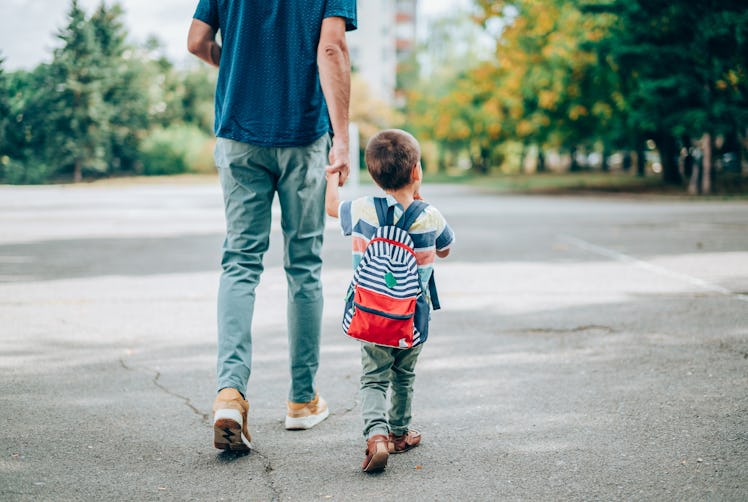Want Your Kid To Do Better In School? Bike Or Walk There
A new study shows that being active on the way to class is great for kids to kick off the school day.

It’s not exactly news that movement makes our brains — and the brains of our kids — work better. A number of studies have shown that school-based physical activity can improve classroom performance, for example. But that movement doesn’t just have to be on the weekends or at recess. In fact, a recent, large-scale study from researchers in Finland might change the way your kids commute to class in order to unlock more brainpower.
The new study found that adolescents who walk or bike to school report enjoying school more, and have increased odds of high perceived academic performance and reading competency.
Researchers gathered data from more than 34,000 Finnish adolescents — which accounts for nearly half of Finland’s eighth and ninth-grade population — through an anonymous and voluntary classroom-administered questionnaire that was part of a more extensive School Health Promotion study.
Of all surveyed participants, 54% reported walking or biking to school for at least 10 minutes each day. Boys were more likely than girls to walk or bike to school, and there were no prominent differences regarding socioeconomic status.
“The results regarding active school transport were particularly intriguing as researchers are increasingly interested in the health benefits of travel-related walking and cycling. Being physically active before school could, for example, enhance concentration in the classroom, explaining our observations,” Juuso Jussila, a Doctoral Researcher at the University of Eastern Finland, said in a release.
That being said, the benefits of active school transport methods didn’t reach the same height as those for kids who were physically active during their free time and those who participated in team sports.
“There were no surprises regarding the strong association between leisure-time physical activity and perceived academic achievement due to support from prospective and intervention studies,” said Jussila. “Leisure-time physical activity is typically more intense than active school transport, leading to increases in brain-derived neurotrophic factor in our circulation and, thus, improvements in cognitive performance.”
Despite the preponderance of evidence that physical activity increases overall health in many ways, a shockingly low percentage of kids in the United States meet basic exercise recommendations.
Physical Activity Guidelines for Americans recommend that children and adolescents ages 6 to 17 get 60 minutes or more of moderate-to-vigorous physical activity daily. But according to the Centers for Disease Control and Prevention, just 24% of school-age children in the United States reach that benchmark.
There are opportunities across the board to improve that rate. Providing safe routes for kids to walk or bike to school and encouraging them to do so is a prime candidate, as according to the Federal Highway Administration’s National Household Travel Survey, just 11% of U.S. children participate in active transportation to school.
Fortunately, some school districts are doing a better job of providing opportunities for exercise during the day by protecting recess time for grade-school students, with at least 10 states mandating the daily playtime and another seven requiring schools to set aside time each day for some type of physical activity. But amongst recess-less high school students, just 51.7% attend physical education classes during an average week, and only 29.9% participate in physical education classes daily.
No matter how you slice it, improving physical activity levels among students in the United States is a systemic public health issue. Leaving the car at home when possible for morning drop-off is one of numerous solutions, though admittedly, weather and safety concerns preclude active transportation as an option for some kids in less walkable neighborhoods.
This article was originally published on